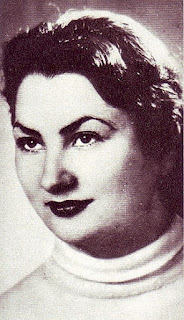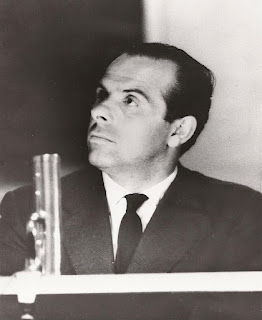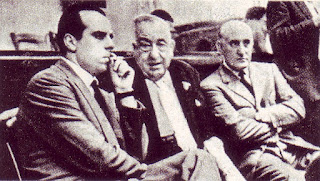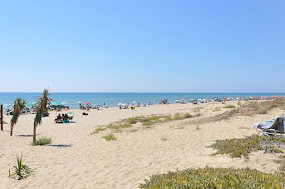NEW - La dolce vita - cinematic masterpiece
Commentary on decadence of 1950s Rome saw Fellini hailed as a genius
La dolce vita, a film still regarded as one of the greatest in cinema history, was screened in front of a paying audience for the first time on this day in 1960. After a preview before invited guests and media at the Fiamma cinema in Rome, the Capitol Cinema in Milan was chosen for its public premiere. The movie went on general release in Italy the day afterwards and made its London debut on 8 February. It was shown in America for the first time in April of the following year. Directed by Federico Fellini, the film won the Palme d'Or, the highest award presented at the Cannes Film Festival in 1960 and was nominated for four Academy Awards, including Best Director for Fellini, although ultimately the production team had to be content with the Oscar for Best Costumes. It won numerous awards in Italy, while the brilliant Nino Rota’s soundtrack was nominated for a Grammy. In America, the National Board of Review and the New York Film Critics Circle made it their best foreign film of 1961. The film is episodic rather than having a conventional plot, following the life of Marcello Rubini, a somewhat jaded magazine gossip columnist portrayed by Marcello Mastroianni, over seven days and nights in the Rome of the late 1950s. Read more…
________________________________________________________
Carolina Morace - footballer and coach
Prolific goalscorer first woman in Italian Football Hall of Fame
Footballer and coach Carolina Morace, the first woman to be inducted into the Italian Football Hall of Fame, was born on this day in 1964 in Venice. Morace played for 20 years for 10 different clubs and was the leading goalscorer in the Women's Serie A on 12 occasions, including an incredible run of 11 consecutive seasons from 1987 to 1998. She won the Italian championship 12 times with eight of her clubs and scored an extraordinary 550 goals at an average of three in every two games at her peak, with a further 105 goals in 153 appearances for the Italy national team. Four of those came in one match when Italy Women played England in a curtain-raiser to the pre-season Charity Shield game at Wembley in 1990, which she described as one of her proudest moments. Morace, the daughter of a former officer in the Italian Navy, grew up a stone’s throw away from Venice's football ground at Sant' Elena. She joined her first club in Venice when she was 11 years old, her ability to score goals allowing her to be accepted quickly in boys' teams. Her father soon realised she needed to play at a higher level and at 14 helped her move to a club at Belluno, 120 miles north of Venice in the mountainous Dolomites. Read more…
_________________________________________________________
Giovanni Battista Moroni – artist
Portrait painter left visual record of a changing society
Giovanni Battista Moroni, who was considered one of the greatest portrait painters of the 16th century, died on this day in 1578 while working on a painting at a church just outside Bergamo in the northern region of Lombardy. His wonderful legacy of portraits provides an illuminating insight into life in Italy in the 16th century, as he received commissions from merchants trying to climb the social ladder as well as from rich noblemen. Moroni was born at Albino near Bergamo somewhere between 1510 and 1522 and went on to train under a religious painter from Brescia, Alessandro Bonvicino. Although Moroni painted many acclaimed religious works, he became known much more for the vitality and realism of his portraits, for which he was once praised by Titian. Some of Moroni’s work is in the Uffizi Gallery in Florence and the National Gallery in London but there are fine examples of Moroni’s work in the collection of the Accademia Carrara in Bergamo, such as The Old Man Sitting Down and the Portrait of Bernardo Spini. One of Moroni’s finest religious works, the Coronation of the Virgin, can be seen in the church of Sant'alessandro della Croce in Via Pignolo in Bergamo’s lower town. Read more…
_______________________________________________________
Cesare Maldini - footballer and coach
Enjoyed success with AC Milan as player and manager
The footballer and coach Cesare Maldini, who won four Serie A titles and an historic European Cup as a centre half with AC Milan and later coached the club with success in domestic and European football, was born on this day in 1932 in Trieste. When, under Maldini’s captaincy, Milan beat Benfica 2–1 at Wembley Stadium in London in May 1963, they became the first Italian club to win the European Cup and Maldini the first Italian captain to lift the trophy. Maldini’s international career included an 18-month spell as coach of the Italy national team, during which the Azzurri reached the quarter-finals of the 1998 World Cup. He had earlier won three consecutive European championships as coach of the Italy Under-21s. He is the father of Paolo Maldini, the former AC Milan defender whose record-breaking career spanned 25 years and included no fewer than five winner’s medals from the European Cup and its successor, the Champions League. Cesare’s grandsons, Christian and Daniel - Paolo’s sons - are also professional players. As a child, Cesare Maldini was largely brought up by his mother, Maria. Read more…
________________________________________________________
Saint Agatha of Sicily – Christian martyr
Huge crowds turn out for feast day in Catania
One of the largest festivals in the Roman Catholic calendar takes place on this day every year to celebrate the life of the Christian martyr Saint Agatha of Sicily. In Catania, which adopted her as the patron saint of the city, hundreds of thousands of people line the streets to watch the extraordinary sight of up to 5,000 citizens hauling a silver carriage said to weigh 20 tons (18,140kg), bearing a huge statue and containing the relics of the saint, who died in 251 AD. The procession follows a route from Piazza del Duomo that takes in several city landmarks and ends, after a long climb along the Via Antonino di Sangiuliano at Via Crociferi. The procession begins in the afternoon and finishes deep into the night. There is an enormous fireworks display that takes place when the procession reaches Piazza Cavour. The final leg, the Race of the Cord, is the part that involves the seemingly endless lines of white-smocked citizens pulling cords attached to the carriage up the long hill of San Giuliano. As well as being the patron saint of Catania, which may have been her birthplace and where citizens have long believed she has a calming influence on the volcanic activity of Mount Etna, Saint Agatha is the patron saint of breast cancer patients. Read more…

































